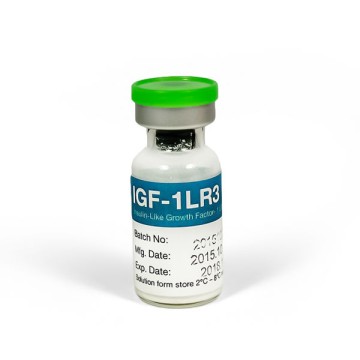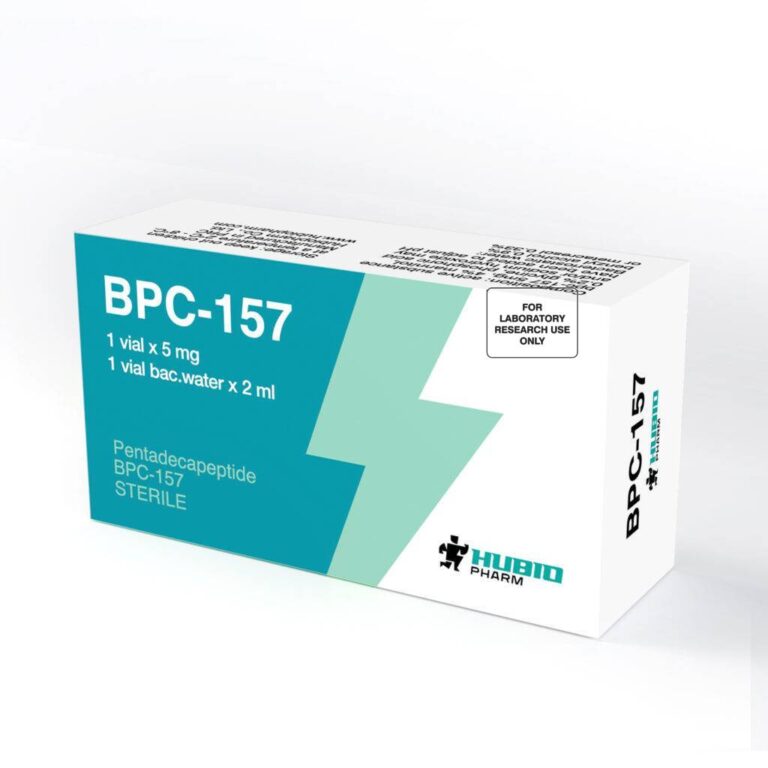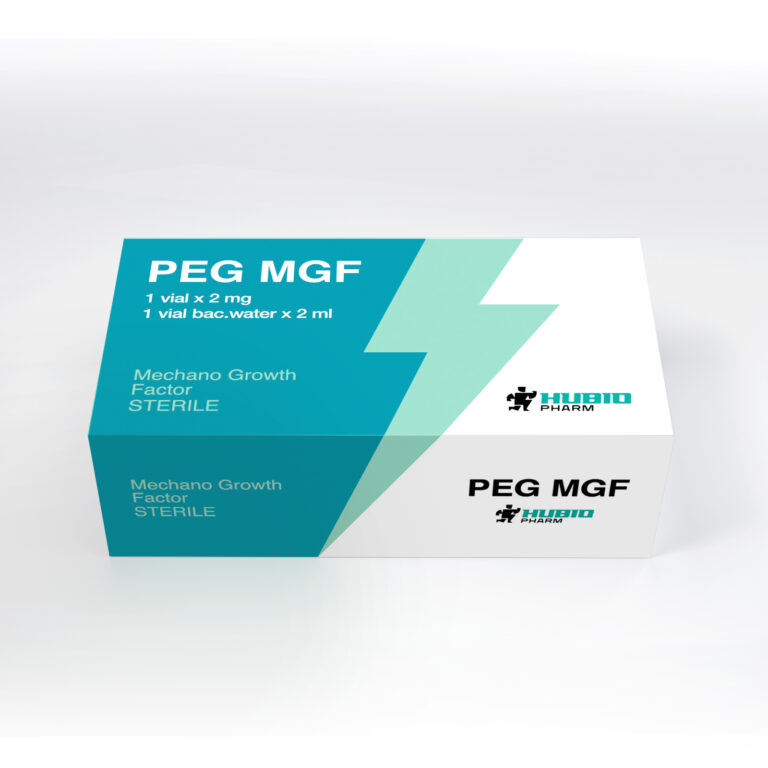- What Is IGF-1 Peptide?
- Types of IGF-1 Peptides
- How IGF-1 Works: The Science
- Key Benefits of IGF-1 Peptide
- IGF-1 Peptide Medical Applications
- IGF-1 LR3 vs. IGF-1 DES
- IGF-1 Dosage & Cycle Recommendations
- IGF-1 Stack Options
- Side Effects of IGF-1 Peptides
- Monitoring and Blood Testing
- IGF-1 Storage Guidelines
- Where to Buy IGF-1 Peptide
- About the Compound
- Reviews
- IGF-1 Peptide FAQ
- Should You Use IGF-1?
What Is IGF-1 Peptide?
IGF-1 (Insulin-Like Growth Factor 1) is a protein peptide naturally produced in the liver in response to human growth hormone (HGH). In its synthetic form, IGF-1 is used in sports performance, anti-aging, fat loss, and injury recovery. It mimics the effects of insulin and enhances the activity of HGH, making it a key factor in muscle hypertrophy, fat metabolism, tissue repair, and cellular regeneration.
Types of IGF-1 Peptides
IGF-1 LR3 (Long Arg3 IGF-1)
- Long-lasting version of natural IGF-1
- Half-life of 20–30 hours
- Ideal for systemic muscle growth and fat loss
IGF-1 DES (1-3)
- Shorter half-life: 20–30 minutes
- More targeted action in muscle tissue
- Best used pre- or post-workout for localized muscle growth
How IGF-1 Works: The Science
IGF-1 is released by the liver in response to HGH. It binds to IGF-1 receptors throughout the body, stimulating:
- Muscle cell activation
- Protein synthesis
- Collagen formation
- Bone regeneration
- Neural repair
- Tissue growth and healing
IGF-1 also plays a critical role in metabolic regulation, enhancing the body’s ability to use fat for energy.
Key Benefits of IGF-1 Peptide
1. Muscle Growth
- Stimulates muscle cell (myoblast) proliferation
- Speeds up post-workout recovery
- Supports lean mass development
2. Fat Loss
- Enhances fatty acid mobilization
- Helps reduce visceral and subcutaneous fat
- Improves body composition over time
3. Injury Recovery
- Supports soft tissue healing
- Aids in recovery of tendons, joints, ligaments
- Accelerates cartilage repair
4. Anti-Aging Effects
- Improves skin elasticity and hydration
- Preserves lean mass during aging
- Supports mitochondrial health
5. Cognitive Support
- Encourages neurogenesis
- Improves mood and memory
- Supports recovery from brain injury
IGF-1 Peptide Medical Applications
| Condition | Role of IGF-1 |
|---|---|
| Growth Hormone Insensitivity | Promotes normal childhood growth |
| Type 1 Diabetes | Improves insulin sensitivity (under research) |
| Sarcopenia | Restores muscle mass |
| Alzheimer’s Disease | Supports neuroregeneration |
| Osteoporosis | Enhances bone mineral density |
IGF-1 LR3 vs. IGF-1 DES
| Feature | IGF-1 LR3 | IGF-1 DES |
| Duration | 20–30 hours | 20–30 minutes |
| Action | Systemic | Localized |
| Best Use | Daily systemic application | Pre/post-workout muscle targeting |
| Popularity | Very popular in bodybuilding | Niche but highly effective |
IGF-1 Dosage & Cycle Recommendations
IGF-1 LR3
- 20–40 mcg/day
- Injected subcutaneously or intramuscularly
- Once per day in the morning or post-training
- Cycle: 4–6 weeks on, 2–4 weeks off
IGF-1 DES
- 50–150 mcg/day
- Injected into specific muscle groups
- Pre- or post-workout
Always consult a medical professional before starting any IGF-1 peptide cycle.
IGF-1 Stack Options
| Stack | Purpose |
| IGF-1 + HGH | Synergistic anabolic growth |
| IGF-1 + BPC-157 + TB-500 | Injury repair, tendon healing |
| IGF-1 + CJC-1295 + Ipamorelin | GH optimization & fat loss |
| IGF-1 + TRT | Lean muscle development & hormonal balance |
Side Effects of IGF-1 Peptides
Common Side Effects
- Hypoglycemia (low blood sugar)
- Water retention
- Joint stiffness
- Headaches
- Injection site redness
Serious/Rare Risks
- Accelerated tumor growth (in those with preexisting cancers)
- Insulin resistance
- Acromegaly-like tissue overgrowth
IGF-1 should only be used under medical supervision with regular blood tests.
Monitoring and Blood Testing
Key metrics to monitor:
- IGF-1 serum levels (target: 250–350 ng/mL)
- Fasting glucose
- Liver enzymes
- Thyroid levels (TSH, T3, T4)
IGF-1 Storage Guidelines
- Unmixed peptide: Store at 2°C–8°C (refrigerated)
- Reconstituted: Use within 7–10 days
- Mix with bacteriostatic water for safety
Where to Buy IGF-1 Peptide
IGF-1 is available through:
- Licensed compounding pharmacies
- Prescription-based peptide clinics
- Research chemical suppliers (lab use only)
Avoid unverified sources and black-market peptides due to contamination and fraud risk.
About the Compound
IGF-1 is a potent anabolic peptide that belongs to a class of growth factors involved in endocrine and autocrine regulation. It works as a downstream mediator of growth hormone and offers unique benefits to athletes, anti-aging clients, and those in injury recovery programs.
Reviews
“After using IGF-1 LR3 for 5 weeks alongside TRT, my recovery and lean mass gains were through the roof.” – Jason D., 39
“I used IGF-1 DES post-surgery on my shoulder. The healing was faster than expected.” – Andrea L., 33
“Best peptide I’ve used for cutting. I maintained muscle while losing fat. Highly recommended for experienced users.” – Mark T., 45
IGF-1 Peptide FAQ
Is IGF-1 peptide legal?
It depends on the country. In the U.S., it’s legal by prescription or for research purposes only.
Can I use IGF-1 without HGH?
Yes, but combining it with HGH enhances effects significantly.
Does IGF-1 help with fat loss?
Yes. It promotes lipolysis and increases metabolic efficiency.
What are the risks of using IGF-1?
Risks include insulin resistance, tissue overgrowth, and tumor stimulation if cancer is present.
Can women use IGF-1 peptides?
Yes, but doses should be lower, and physician supervision is required.
Should You Use IGF-1?
IGF-1 is not a casual supplement. It’s a powerful peptide hormone with profound effects on growth, repair, and metabolism. Whether you’re an athlete seeking enhanced recovery, an aging adult trying to retain lean mass, or someone healing from injury, IGF-1 could be a game-changer — if used responsibly under medical guidance.
For optimal results, combine IGF-1 with proper nutrition, recovery, and complementary therapies like HGH, TRT, or healing peptides.




